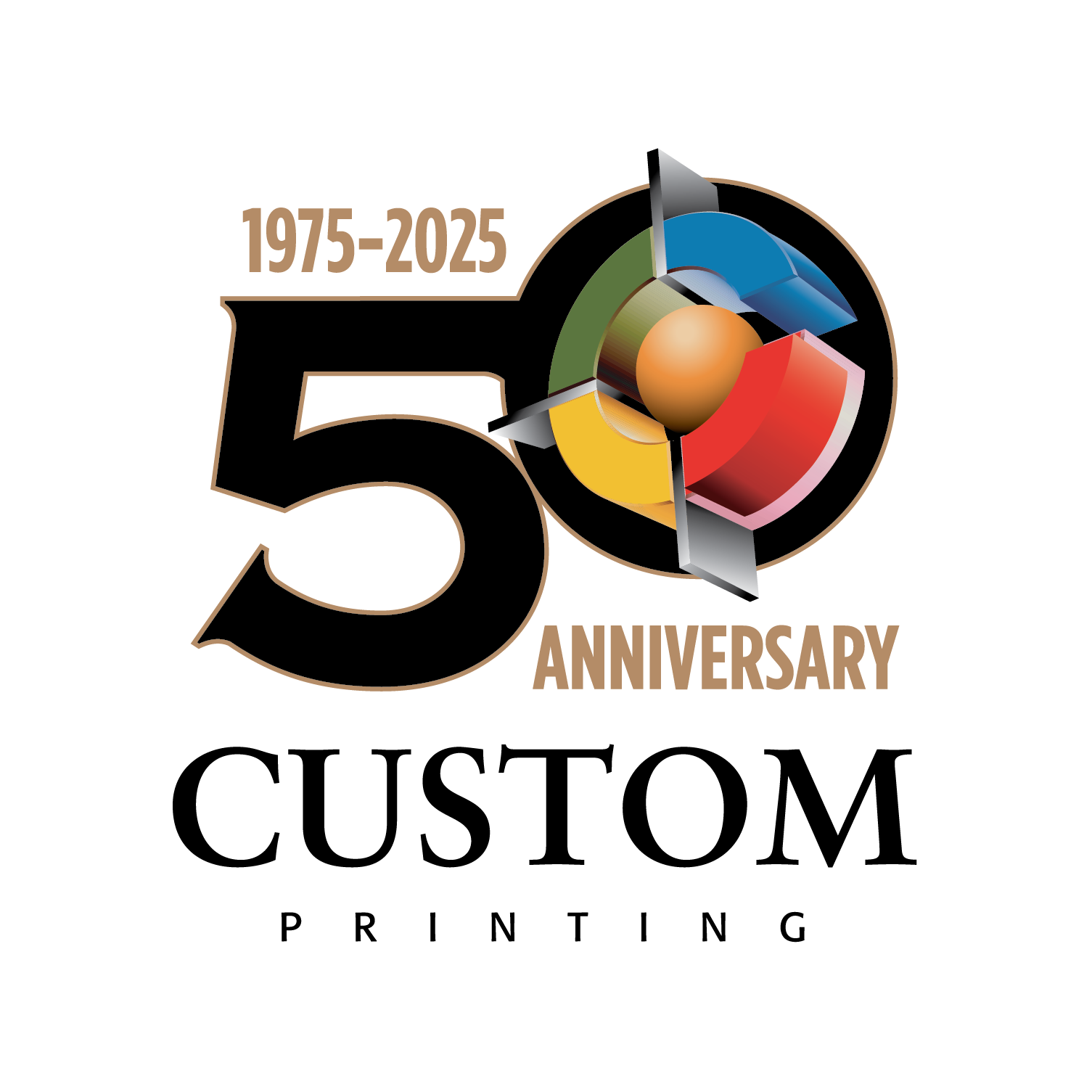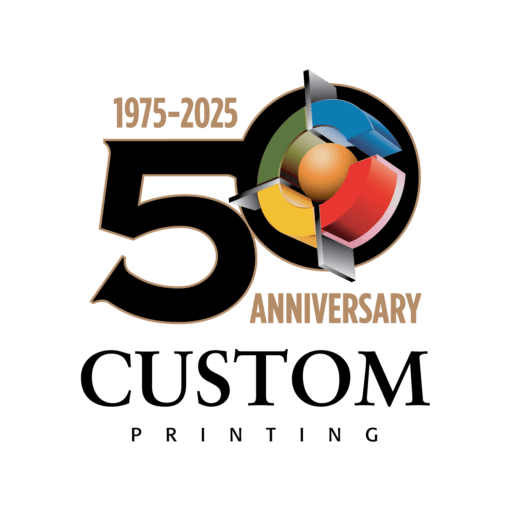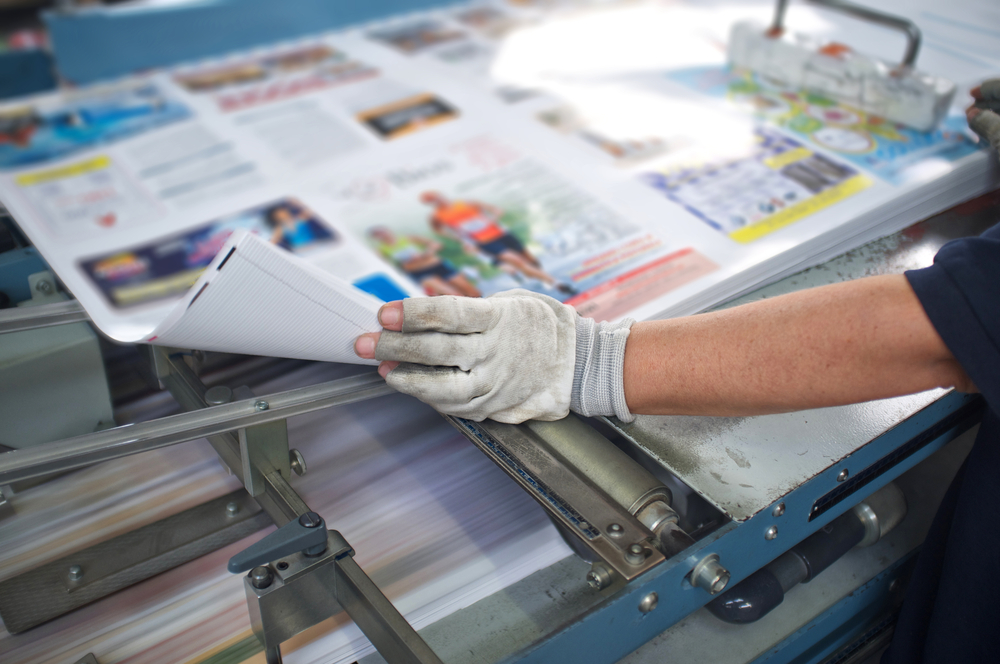If you’re a product manufacturer, you already know that the quality of your product is one of the most important factors that goes into your customer’s decision to purchase your product. While many manufacturers focus on the quality of the operational parts of their product, it can be easy to skip over the part of the manufacturing process that involves printing.
Whether your product needs graphics printed on a cardboard box, a logo printed on a banner, or safety instructions printed on the side of a product, it’s crucial to choose the right printing method. Quality printing means that the colors and ink won’t bleed or fade, even if the product is exposed to moisture or extreme temperatures. These printing techniques are some of the most common ones used in our shop here at Custom Printing Inc.
Flexographic Printing
Flexographic printing, otherwise known as flexo, uses a flexible plate combined with a series of rollers to print artwork onto various materials. Flexographic printing has existed for many years, but the science behind it has improved in recent years. For example, today’s methods use photopolymer plates.
This has allowed flexo to be used in designs requiring a lot more detail, as the image quality has become sharper. While previous flexographic printing may have only been able to produce simple shapes and designs, today, it can be used to produce images with photographic quality.
Today, flexographic printing can be the right printing method for companies looking for the following:
Large volume runs
Setting up the plates for flexographic printing can be expensive, but it’s often the most economical choice for large-volume printing. Plates can last through millions of runs before quality issues emerge, making this method ideal for everything from large mail campaigns to product packaging.
Multiple Colors
It’s possible to use almost any combination of inks to create nearly any color you can imagine. Print jobs that require a photographic look are typically ideal candidates for this print method.
Converting on the same presses
Flexographic printing can be a great choice if your print job will also require the finished product to go through a process such as laminating, die-cutting, or slitting.
Using thinner substrates
Flexographic printing uses relatively small amounts of very thin ink, allowing the finished product to dry quickly. The result is less waste and faster printing.
Screen Printing
Screen printing was invented in China around 1000 AD, but its relative simplicity and high-quality print images have made it popular today. The idea is still relatively simple; ink is pressed through mesh fabric and a stencil, which transfers the design to the material that needs to be printed.
Today’s screen printing is more sophisticated than the method you may have used to design a t-shirt in middle school, making it an excellent choice for print jobs that require the following:
Durability and longevity
These designs can last for hundreds of years if cared for properly.
Outdoor applications and abrasion resistance
Screen printing techniques are ideal for everything from outdoor banners to industrial equipment.
Thicker deposits and substrates
The ink used for most screen printing techniques is thicker and longer lasting than the ink used in techniques such as flexography. This can make it ideal for mediums such as fabric, metals, and plastics. It’s even possible to use this method to print electronics.
Specialty Printing
This method is ideal if your print job requires inks that have special ultraviolet, thermoformable, or conductive properties. A wide variety of inks can be used with screen printing.
Digital Printing
Digital technology has revolutionized the printing industry in recent years. This method allows users to redesign their graphics and print graphics almost instantly. The result is products that can be made efficiently and relatively cheaply.
Of course, digital printing is limited by the physical printers that the system uses. This is not an ideal method for some materials. It may also not be the most economical choice for large printing volumes. However, it is ideal for:
Variable printing
Digital prints are ideal for jobs that need to produce a high number of prints with variations, such as letters that are personally addressed to their recipients or unique discounts that change for each customer. This method of printing is also ideal for companies that need to change or alter product designs frequently.
High resolutions
Digital printing can achieve incredibly crisp images. It’s ideal for large-scale printing that will be viewed from short distances.
Faster Speed
It can start producing products in a matter of minutes.
Complex colors
It is possible to produce just about any color imaginable with digital printing. Remember, however, that the capability of this method is limited to the quality of the physical printers being used to create the image.
Printing brand-protection features
Microtext, watermarks, QR codes, and many other types of security features are possible with digital printing.
Of course, many print jobs require combining these techniques and others to produce the desired result as cheaply and efficiently as possible. Fortunately, at Custom Printing Inc., we are experts at determining the best way to produce your product and image.
If you need help determining which print method suits your product or promotional materials, contact us and give Custom Printing Inc. a call. We have years of experience helping customers find the right method for their product design. We would love to become a valued part of your manufacturing process or next promotional campaign.


